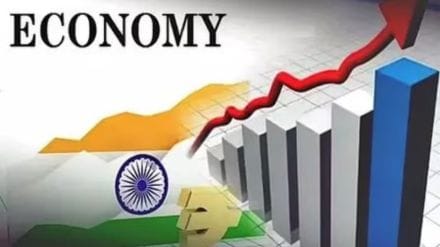India Inc has held its ground in the first half of FY26, with rating agencies – Crisil, ICRA and CareEdge – reporting upgrades outpacing downgrades across sectors. Strong domestic demand, policy support and leaner balance sheets have helped corporates absorb external shocks, including steep US tariffs and the currency volatility.
For H1FY26, Crisil Ratings pegged the upgrade-to-downgrade ratio at 2.17x while ICRA reported a sharper 2.9x ratio and CareEdge came in at 2.56x. Infrastructure, hospitality, capital goods and real estate led the upgrade momentum while export-linked sectors and MSME-heavy segments faced pressure.
“The upgrade rate of 14% is higher than the decadal average, and reaffirmation rates remain strong at 80%,” Subodh Rai, chief ratings officer at Crisil Ratings, said. “This reflects continued resilience in corporate credit profiles, supported by healthy demand and improved financial metrics.”
What did K. Ravichandran say?
ICRA has revised its GDP growth projection for FY26 to 6.5%, citing supportive domestic demand and fiscal measures. “Despite global headwinds, domestic consumption and fiscal support have cushioned the impact,” K. Ravichandran, executive vice president & chief rating officer, said. “We expect credit quality to remain stable, though export-heavy sectors may see margin pressures.”
He highlighted that the subdued export outlook and rising import concerns are likely to delay the revival in the private investment cycle.
CareEdge Ratings has flagged similar trends, with nearly 40% of its upgrades linked to infrastructure. “India Inc’s performance has improved, but the external environment is turning more complex,” Sachin Gupta, chief rating officer at CareEdge Ratings, said. “The sharp escalation in US tariffs is reshaping trade flows and delaying private capex.”
Which sectors were hit the hardest?
Export-oriented sectors such as diamonds, shrimp, and textiles were among the hardest hit, with Crisil noting that nearly 30% of downgrades stemmed from these segments. While some exporters frontloaded revenues in H1, the full impact of tariffs may become more visible in the second half.
Infrastructure continues to anchor the credit story. CareEdge reported a sectoral credit ratio of 8.54x, with transport and power leading upgrades. “Timely commissioning of road and renewable projects, healthier payment cycles, and InvIT-driven portfolio shifts have improved financial flexibility,” Rajashree Murkute, senior director at CareEdge, said.
The BFSI sector has showed signs of recovery, with CareEdge’s credit ratio for the segment rising to 2.10x. Banks and housing finance companies led upgrades, while small finance banks and NBFCs exposed to microfinance and unsecured loans faced downgrades. “Stress in microfinance is abating slowly and may impact profitability,” said Sanjay Agarwal, senior director, CareEdge.
Rating agencies expect credit momentum to continue, but caution that persistent global trade tensions could temper the outlook. The real test will be whether India Inc’s resilience can extend to vulnerable segments like MSMEs and export-linked industries. For now, strong balance sheets and domestic buffers are keeping the credit cycle on track.
